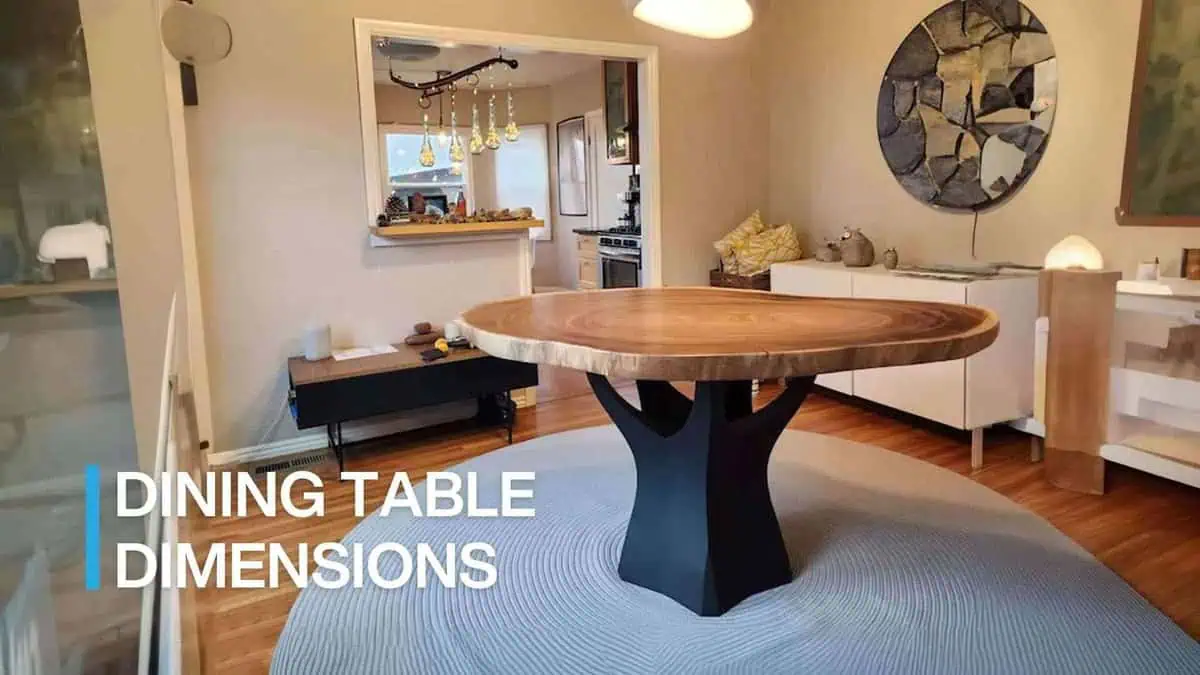When it comes to interior design, the dining table often serves as the heart of the home. It’s where families gather for meals, friends catch up over coffee, and special occasions are celebrated.
The dimensions of your dining table can significantly influence not only the aesthetic appeal of your space but also its functionality.
Let’s delve into why getting the right dining table dimensions is crucial in interior design.
Creating Balance in Your Space
Having the right dining table dimensions creates a harmonious balance within a room. If the table is too large, it can overwhelm the space, making it feel cramped and uncomfortable. Conversely, a table that is too small might look out of place and fail to meet the practical needs of the household.
To achieve balance, it’s essential to consider the size of the room and the other furniture within it. A good rule of thumb is to leave at least three feet of space around the table to ensure ample room for movement and to avoid a cluttered appearance.
Ensuring Comfort and Accessibility
Comfort is paramount when it comes to dining. The dimensions of your dining table affect how easily people can sit, eat, and interact with one another. The standard height for a dining table is around 28 to 30 inches, which accommodates most chairs and provides a comfortable dining experience.
The width and length of the table should be chosen based on the number of people you wish to seat. For instance, a table that is 36 to 48 inches wide allows for sufficient space for place settings and serving dishes, while the length should correspond to the number of chairs you plan to place around it.
Maximizing Functionality
Beyond dining, a well-chosen table can serve multiple purposes, such as a workspace, a place for kids to do homework, or a spot for casual gatherings. In such cases, considering the table’s dimensions becomes even more critical.
An extendable table can offer flexibility, allowing you to adjust its size based on the occasion. This is particularly useful in smaller homes where space is at a premium, and multi-functional furniture becomes essential.
Complementing Your Design Style
The dimensions of your dining table should also complement your overall design style. A sleek, modern space might benefit from a minimalist table with clean lines and a compact footprint, while a traditional setting could accommodate a more substantial, ornate table.
Additionally, considering the height and bulk of the table can ensure it fits seamlessly with other elements in the room, such as lighting fixtures and cabinetry.
Practical Considerations for Everyday Use
In addition to aesthetics, practical considerations are essential when selecting a dining table. Think about the daily wear and tear your table will endure. For families with young children, a sturdy table with rounded edges can be safer and more durable. Additionally, easy-to-clean surfaces can save time and effort in maintaining the table’s appearance.
Future-Proofing Your Investment
Investing in a dining table with the right dimensions is not just about immediate satisfaction but also about future-proofing your home. As your family grows or your lifestyle changes, a well-chosen table can adapt to new needs. Opting for a timeless design with flexible dimensions ensures that your table remains functional and stylish for years to come.
The dimensions of your dining table play a pivotal role in both the functionality and aesthetic of your dining space. By considering factors such as room size, comfort, and design style, you can select a table that not only enhances your home’s interior but also becomes a cherished centerpiece for everyday life and special occasions.
Whether you’re designing a new space or updating an existing one, paying attention to dining table dimensions can make all the difference in creating a harmonious and inviting environment.

